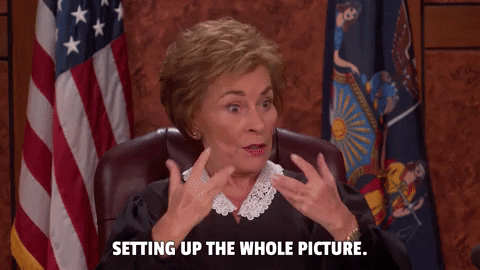Harmless Error Illustrated
August 11, 2024 The issue in Gibson, Inc. v. Armadillo Distribution Enterprises, Inc. was the admissibilty of evidence about third-party use of an alleged trademark. After concluding that the trial court erred in excluding that evidence, the Fifth Circuit considered whether the error was harmful. To illustrate that concept, the Court discussed a helpful general case on that issue, Bocanegra v. Vicmar Services, 320 F.3d 581 (5th Cir. 2003), which it summarized as follows (citations omitted):
The issue in Gibson, Inc. v. Armadillo Distribution Enterprises, Inc. was the admissibilty of evidence about third-party use of an alleged trademark. After concluding that the trial court erred in excluding that evidence, the Fifth Circuit considered whether the error was harmful. To illustrate that concept, the Court discussed a helpful general case on that issue, Bocanegra v. Vicmar Services, 320 F.3d 581 (5th Cir. 2003), which it summarized as follows (citations omitted):
In Bocanegra v. Vicmar Services, Inc., a pedestrian was fatally injured when he was struck by a streetsweeper on the median of a highway. On the eve of trial, the pedestrian’s estate sought to introduce evidence demonstrating that the driver of the streetsweeper was impaired by the use of marijuana a few hours prior to the fatal collision. Citing Rule 403 and the Daubert standard, the district court granted the driver’s motion in limine and excluded the driver’s expert testimony and an admission from the driver that he had smoked marijuana a few hours before the incident. … On appeal, this court determined that the district court’s “reliance on Rule 403 as another basis to exclude [the relevant expert] testimony concerning cognitive impairment resulting from [the driver’s] ingestion of marijuana” constituted an abuse of discretion. This court further held that the error affected the pedestrian’s substantial rights because “the jury was not presented with a complete picture of what happened on the night in question.” This court concluded that the pedestrian’s estate was left with no means of countering the driver’s argument that he “reacted reasonably and did the best he could under the circumstances.”
No. 22-40587 (Aug. 8, 2024). From there, the Court concluded that the exclusion of the third-party use evidence in the case at hand prevented the jury from getting a complete picture of the alleged trademark’s use. PREVIEW: I have an article coming out in the Texas Law Review Online this fall that uses the metaphor of a “complete picture” to analyze the past SCOTUS term’s cases about the use of history.